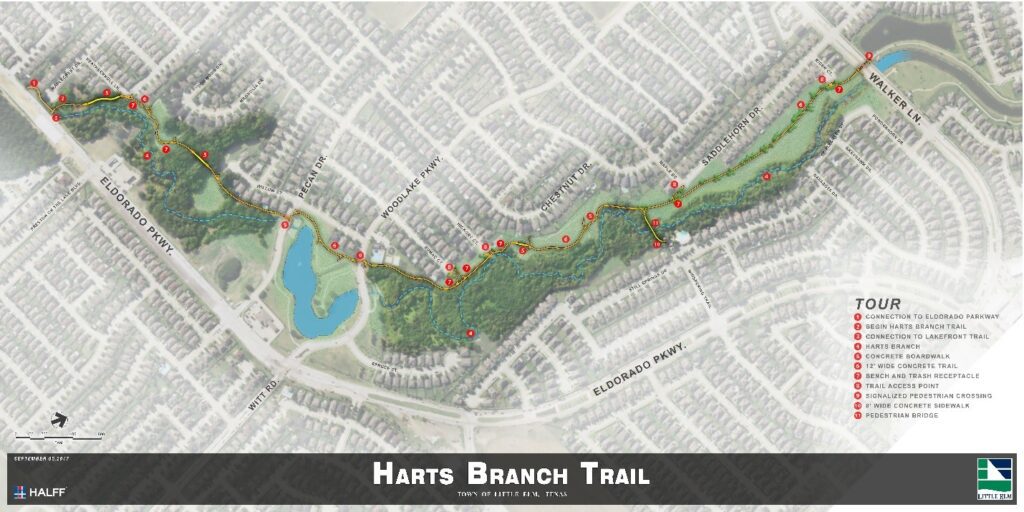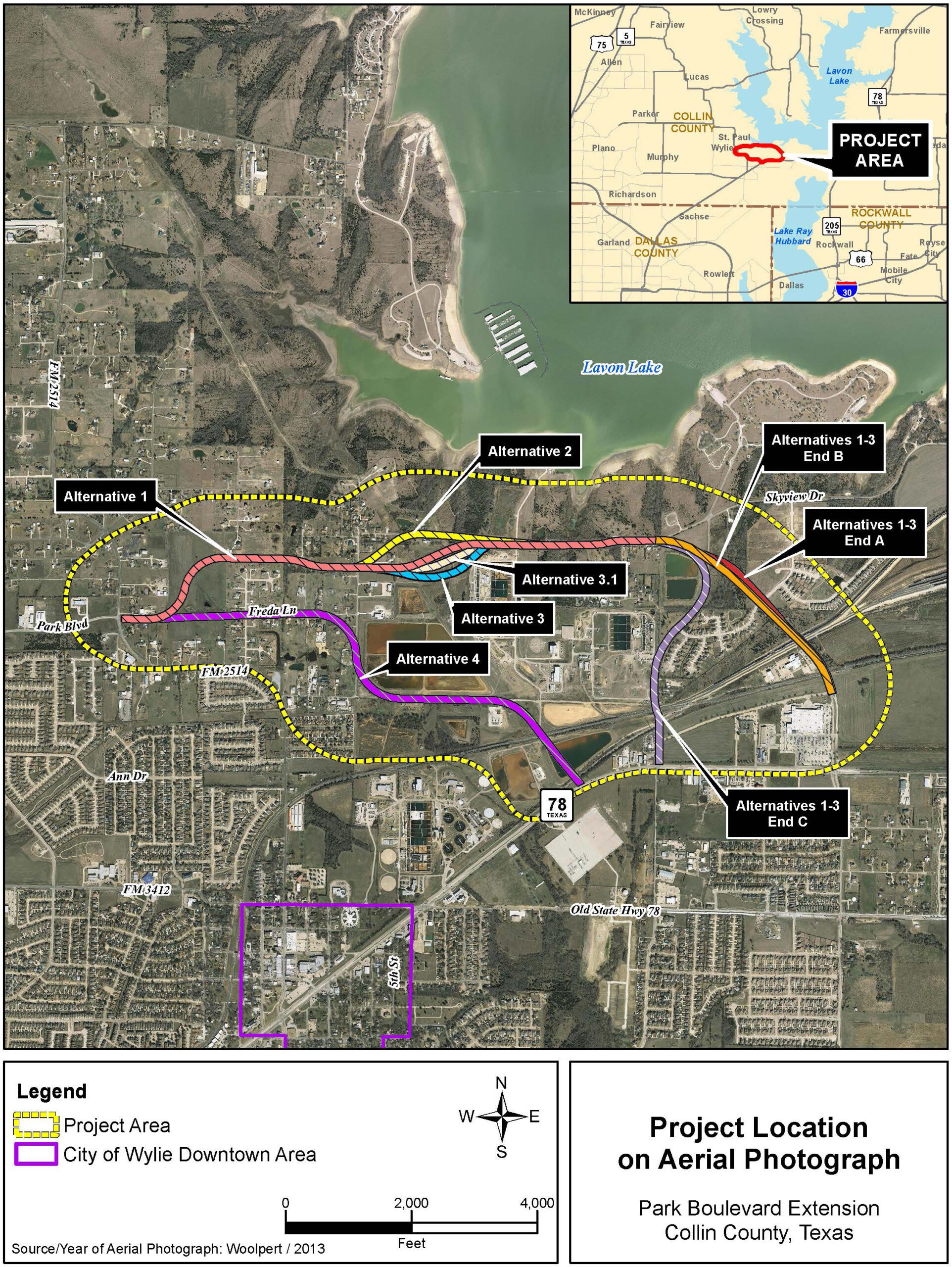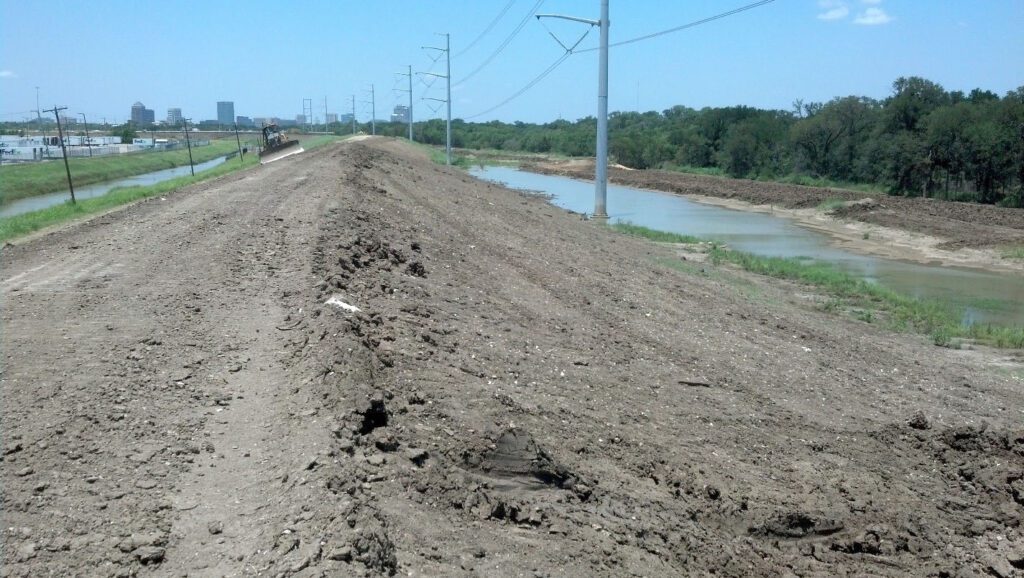The U.S. Army Corps of Engineers and Civil Works—the More You Know
The U.S. Army Corps of Engineers (USACE) is a diverse organization. One of its many missions is to develop and manage the nation’s water resources.
USACE, acting under Section 404 of the Clean Water Act, serves as the regulatory agent issuing permits for the placement of fill material into what are referred to as waters of the United States. In 2017, Halff introduced the basics of Section 404 permitting in What You Need to Know About Section 404 Permitting. The article introduced waters of the United States and common misconceptions about Section 404. It also identified the general steps one may follow when Section 404 applies.
Environmental Protection Agency (EPA) and Department of the Army propose revised definition of “waters of the United States.” Read more.
To advance the discussion, we introduce another level of the organization—the USACE Civil Works program. USACE civil works may include flood risk management, ecosystem restoration, water supply, recreation and/or fish and wildlife management facilities, each of which may include aquatic resources classified as waters of the United States.
As USACE civil works become (or may already be) closely integrated with growing communities, infrastructure projects have the increased potential to affect waters of the United States within the geographic context of a federal civil works project (e.g., reservoir, levee system or wildlife management area). Consequently, these communities may want to alter existing USACE civil works projects to increase recreational opportunities or improve/maintain flood risk management, thereby affecting waters of the United States. In either case, the process of receiving “USACE approval” for the project entails recognizing the role of different groups comprising USACE, and properly addressing the responsibilities of each group.
What is USACE?
USACE is separated into numerous regional divisions, which are then divided into districts, each of which may oversee several civil works projects within their boundaries. The most common and perhaps most evident of these are major reservoirs, which are owned, operated and maintained by USACE. These are generally facilities that are familiar to the public and are valued for their recreational opportunities. Information regarding the limits of federal ownership, or management in the form of flowage easements, are usually available for public consumption through a local or regional lake office.
Less evident examples are the myriad flood risk reduction projects that were constructed by USACE, but operation and maintenance rest with a non-federal sponsor, usually a municipal or similar government organization. The operational responsibilities of USACE to these facilities is managed separately from the USACE regulatory responsibilities under Section 404.
How to Proceed
How can the managed limits of these facilities affect your project? The following text describes scenarios commonly encountered. Each is intended to summarize the process, and is followed by project examples in which Halff Associates assisted clients through the process. The USACE process to approve modifications to federal civil works projects is commonly referred to as Section 408, and requirements for projects may vary on a case-by-case basis. For additional information, please refer to USACE EC 1165-2-220.
Scenario 1: Projects Across Lake Flowage Easement
A flowage easement occurs on property that is privately owned, but on which USACE owns the right to inundate in perpetuity for purposes of flood storage. USACE restricts what landowners can do on flowage easement property—structures for human habitation are generally prohibited, whereas most other activities may be approved. The limits of the flowage easement should be found in the property deed, often defined or cited as an elevation. Requests for construction in the flowage easement are generally coordinated through the reservoir control office, and at a minimum should include the following:
1. Detailed design plans, including baseline and finished elevations of the project
2. Plat map showing the location relative to the government fee-ownership boundary
3. Demonstration of no net loss of flood storage capacity (cut/fill calculations)
Other information may be required specific to the nature of the request. Activities in flowage easements often affect waters of the United States, subject to regulation under Section 404. The reservoir control office may require a demonstration that the activity is not subject to regulation under Section 404 (e.g., a waters of the United States delineation study). If the activity does require authorization by nationwide permit, a pre-construction notification demonstrating compliance with the applicable nationwide permit should be submitted with the request.

Example: The Harts Branch Trail project entailed a new trail alignment in the Town of Little Elm, Texas. During Section 404 review for authorization by a nationwide permit, Halff noticed the lower reach of the trail was in the flowage easement of nearby Lake Lewisville, a USACE reservoir in north central Texas. After providing plan/profile and cut/fill information to the local lake office, consent to construct the trail in the flowage easement was documented by the lake office, and the Section 404 permit was subsequently processed.
Scenario 2: Projects Across Lake Fee-owned Property
Each USACE reservoir will entail real property owned by the United States that is under the administrative jurisdiction of USACE. Any proposed modification to USACE lands will be evaluated on whether public benefits are commensurate with risks to the reservoir operations. Easement requests to support non-recreational projects such as roadways or utilities similarly are coordinated through the reservoir control office and will be considered for detailed evaluation only after alternatives that do not entail federal property have been fully vetted. Detailed information documents include, at a minimum, the following:
1. Detailed design plans, including baseline and finished elevations of the project
2. Detailed hydrologic and hydraulic analysis (if needed)
3. NEPA review and other federal compliance requirements
4. Legal description of the real property to support the description
5. Long-term operation and maintenance plan
Early coordination is especially crucial as it serves to focus efforts for the step-by-step components of the outlined process, thereby optimizing effort and costs between all parties during the review calendar. Should the project require Section 404 authorization, the USACE regulatory manager can provide guidance so the easement review and regulatory review can occur concurrently. A Section 404 permit cannot be issued prior to the reservoir control office approval of a project.

Example: The proposed Park Boulevard extension is a key part of the regional arterial roadway that connects Collin, Denton, Dallas and Rockwall counties. An internal review of project alternatives indicated authorization from the USACE Lake Lavon office would be required to modify an existing roadway across USACE fee-owned lake property. As part of the request and review process, Halff attended numerous coordination and review meetings at the USACE lake office, and prepared alternative analyses, floodplain assessments, natural resource impact assessments, grading/paving/drainage design, a regulatory mitigation plan, legal descriptions and landscape plans. By minimizing the project footprint, extensive NEPA analysis was not required.
Scenario 3: Projects Modifying Flood-control Projects
Many federal flood-control projects are owned in fee by a non-federal sponsor. These may include levee improvement districts or channel improvement projects. Any proposed modification to a federal project will be evaluated on public benefits and whether the modification impairs the function or usefulness of the federal project. Requests are generally coordinated at the USACE district level. Basic requirements for a request similarly include, at a minimum, the following:
1. Detailed design plans, including baseline and finished elevations of the project
2. Detailed hydrologic and hydraulic analysis (if needed)
3. NEPA review and other federal compliance requirements
4. Legal description of the real property to support the description
5. Long-term operation and maintenance plan
If the requestor is someone other than the non-federal sponsor, a written Statement of No Objection is required to document that the non-federal sponsor is aware of the project scope and does not object to the modification request being submitted. The initial submittal should also state whether the proposed project requires Section 404 authorization. The USACE district will conduct the necessary evaluations in a coordinated and concurrent manner, resulting in a single decision document. Similarly, early coordination is crucial to focus efforts for the step-by-step components of the outlined process, and a Section 404 permit cannot be issued prior to the Section 408 approval of a project.

Example: The Irving Flood Control District Section 1, East Cell Levee Remediation project consisted of restoring the existing levee to the original design height and stabilization of levee embankment slopes. Clay materials were used to replace known pervious materials in the levee embankment. Halff assisted the Irving Flood Control District, the entity responsible for operation and maintenance of the levee, in preparing a Section 408 request for permission to construct the improvements. As part of the request and review process, Halff coordinated regular review meetings, and prepared grading/drainage design and necessary Section 404 support documents (e.g., delineation, threatened and endangered species, and cultural resources).
The USACE Fort Worth District has put together a helpful resource page about Section 408. Click here.
Are you looking for more information about the USACE Civil Works program? Do you need a consultant to walk you through the process? Please contact Halff by visiting our Environmental Services page.


